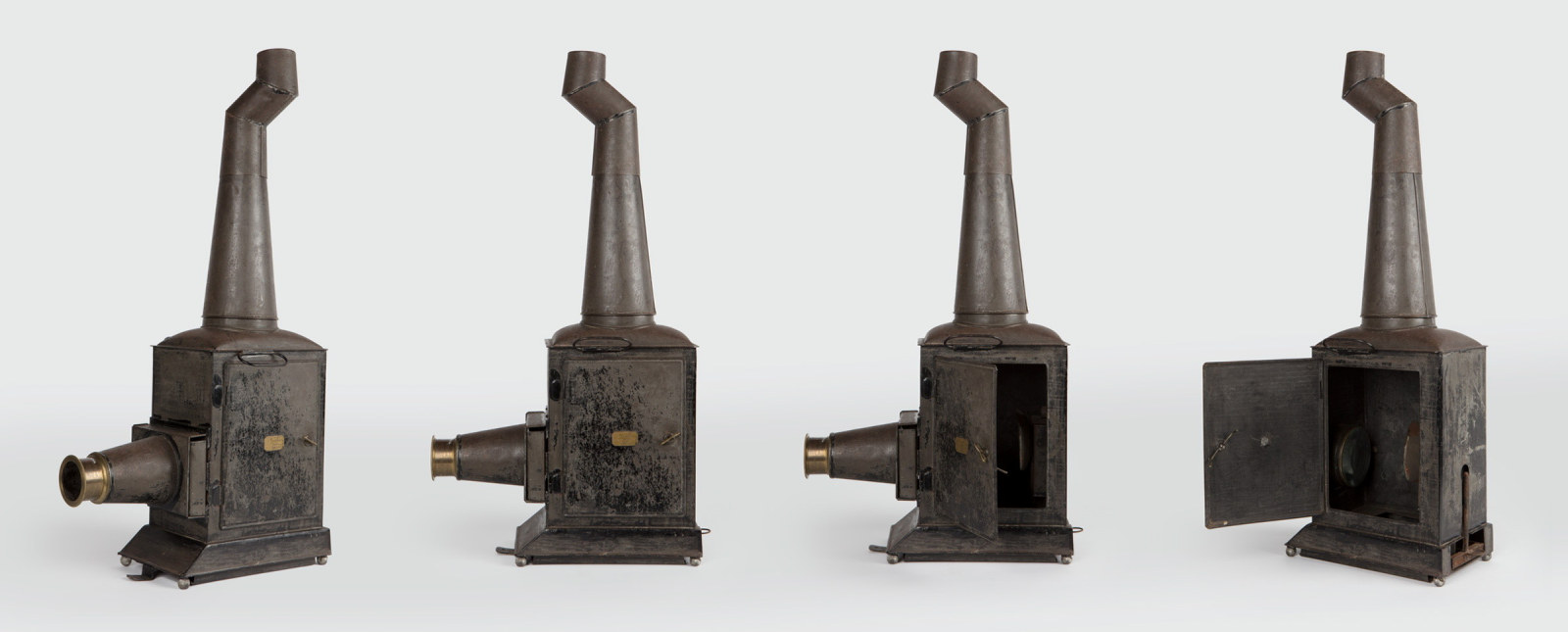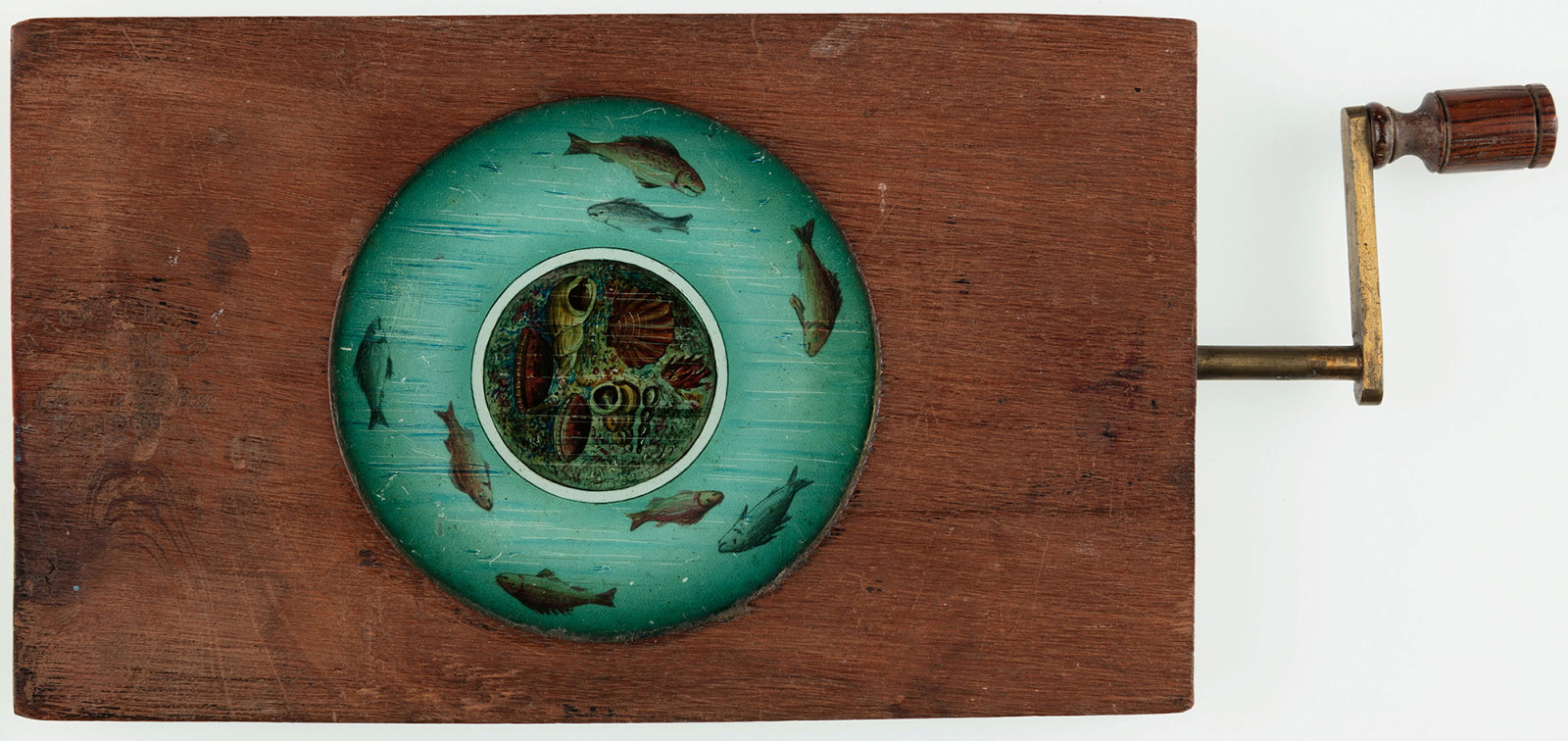Pussy’s road to ruin
‘Pussy’s Road to Ruin’ is not a comic story but a cautionary moral tale for children.
When the tale opens the principal character, Pussy, is a well brought up kitten living with her mother Dame Tabby in the household of a fruiterer. She is taught to catch mice and to behave prettily as all kittens should but is accosted one day by a stranger named Grimalkin. He is an older ‘man of the world’ who may have lived the rough life of a sailor and he leads her into a life of crime by teaching her to kill birds and chickens and inciting her to steal food from her master’s table and larder. To prove her independence Pussy decides to kill the family canary, expecting it to be a delicate morsel, but her master catches her in the act and confines her to a cellar where she must eat mice or starve.
Sydney merchants Brush and MacDonnell of George Street first advertised sets of magic lantern slides for ‘Pussy’s Road to Ruin’ in July 1865 but the story first appeared in slide format in England around 1859 and the Rouse Hill slide set was probably made at that time or within a couple of years of that date.
It is a twelve slide set, mounted in three timber-framed sequences, each of four scenes, and was produced by Newton & Co., like all the other lantern slides at Rouse Hill.
Pussy’s Road to Ruin, or, Do as you are bid
The 12 slides in Newton & Co’s magic lantern set of ‘Pussy’s road to ruin’ are based closely on hand-coloured, wood-engraved, illustrations from a small octavo children’s book first published in England in the late 1840s or early 1850s. Pussy’s road to ruin, or do as you are bid, ‘translated freely from the German’ by Madame de Chatelain was published in Leipzig by William Engelmann and in London by Joseph, Myers & Co of Leadenhall Street. It was retailed by William Tegg & Co of Queen Street, Cheapside and reprinted in at last eight editions before 1859.
The engravings are unsigned and may be by a German artist, but the translator, Clara de Chatelain, nee Clara du Mazet de Pontigny (1807-1876) was born in London, the daughter of a French gentleman. She was a prolific writer and composer and translated other German stories for Joseph, Myers & Co, sometimes under a pseudonym. All were, according to the publisher, ‘amusing books for children’, all with ‘a decidedly moral tendency’ and all illustrated with hand-coloured engravings ‘so spirited and brilliant’ that children were ‘found to take more than an ordinary interest’ in the works. Spirited, perhaps, but not light-hearted.
For further details, see our library catalogue.
Watch the animation
About the authors
Megan Martin
Former Head, Collections & Access
Megan is the former head of Collections & Access at Sydney Living Museums. She has a particular interest in the working of the historical imagination, in teasing out the meanings of objects in museums collections and in crafting the stories that can be recovered/discovered through a close reading of those items of material culture.
Holly Schulte
Former Curator Digital Assets
Holly explored the extraordinary potential of digital imaging technology alongside the enduring appeal of analogue photographic collections. She was responsible for a range of collection related tasks with a focus on photography, digitisation and digital asset management. Her research interests address photography, collections, image making and associated technology.
Magic lantern

Magic lantern at Rouse Hill Estate
The Rouse Hill House magic lantern is a mid-19th century example of a form of image projector which dates back to the 17th century
Published on
Related
Browse all
Magic lantern at Rouse Hill Estate
The Rouse Hill House magic lantern is a mid-19th century example of a form of image projector which dates back to the 17th century

Projected across time
In the late 1960s, John Terry, then a young man living at Rouse Hill House, composed avant-garde music which he set to abstract projected images, and performed at various locations in Sydney

Animated comic sliders for magic lantern
The magic lantern was a popular entertainment technology in the 19th century used to project stories and comic scenes.
![John Gilpin [Scene 8] (mid 19th century)](https://images.mhnsw.au/fotoweb/embed/2024/01/965eaeacbe854708ada79bf12e7eeef2.jpg)
John Gilpin’s Ride
The fictional story of John Gilpin and his misadventures on a runaway horse was originally written as a comic ballad by English poet William Cowper in 1782